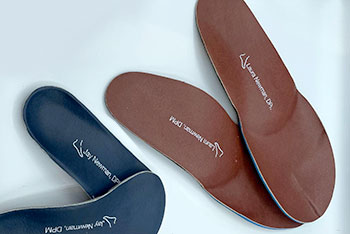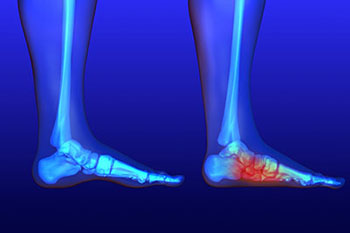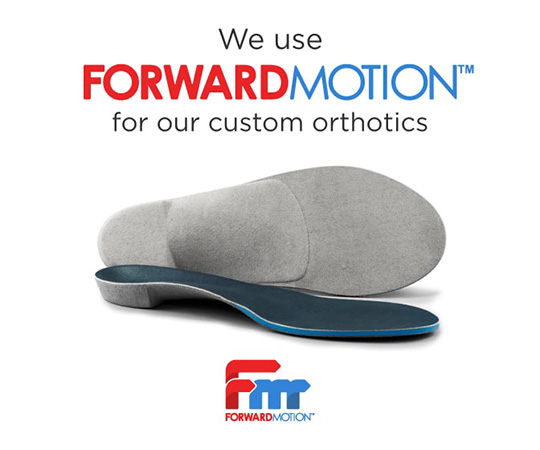Custom Orthotics
Foot Orthotics

Orthotics, unlike typical shoe inserts, are prescribed by a podiatrist to help provide your feet with cushion and support. They can also aid in correcting a specific foot condition that you may be dealing with. Conditions such as diabetes, plantar fasciitis, bursitis, arthritis, and flat feet can highly benefit from the use of orthotics, and orthotics may assist you in alleviating pain that often comes with those ailments.
Orthotics can come in many different shapes and sizes and can be made from different types of materials. The purpose of a custom orthotic is for it to match your specific needs. Some orthotics may be rigid or functional, while others are soft and accommodative. Rigid orthotics are made to help ease foot aches and strains, and they’re made from harder materials like plastic or carbon fiber. Soft orthotics serve to take the pressure off of uncomfortable areas of the feet, such as sores or foot ulcers. This type of orthotic is typically made from soft, compression materials.
In order to ensure your orthotic is doing its job, it’s recommended that you keep a healthy line of communication with your podiatrist and visit at their requested schedule. Doing this will keep track of gradual improvement and will allow you to discuss any possible adjustments needed. If you feel orthotics are a treatment option for you, we recommend you meet with a podiatrist for a proper diagnosis and to discuss how to improve your foot health.
Flat Feet

Flat feet is a condition that affects those who have little to no arch in their feet. When you stand, a person who doesn’t have flat feet will have a gap from the inner part of their feet to the floor, due to the normal arch that slightly rises off the ground. Those with flat feet will experience no such gap. While there are some people who experience no issues with their flat feet, it’s not uncommon for those with this condition to experience discomfort or pain.
Flat feet may cause a certain level of pain due to strained muscles and connecting ligaments. Those not afflicted by flat feet are able to get support while walking by the spring that the arch provides, which in turn, helps to distribute your body weight while taking steps. When the arch is no longer present, there is a larger amount of pressure on your muscles and ligaments in the feet, which is why they become strained and may cause you to feel pain.
To manage the discomfort that may come with flat feet, we recommend that your practice exercises to help ease your pain. Heel cord stretches are a great way to stretch your Achilles tendon and help loosen up calf muscles that are often strained due to flat feet. Placing a golf ball under your foot and rolling it back and forth while seated is another great stretch, especially for your plantar fascia ligament.






